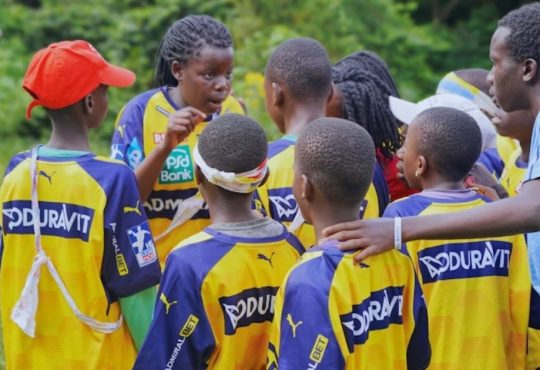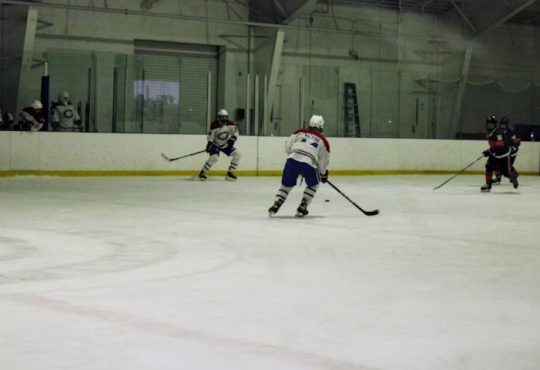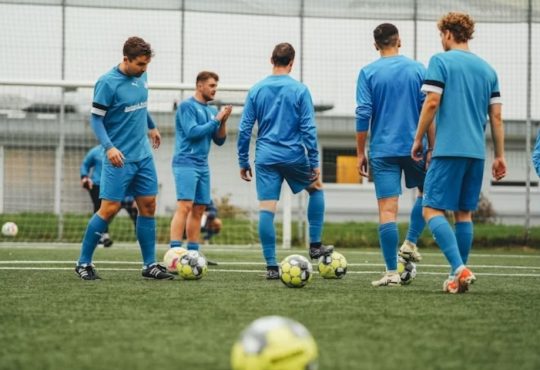Sports have always pushed the boundaries of human performance, blending physical prowess, mental toughness, and strategic intelligence. Today, technology is driving the next leap forward. Virtual Reality (VR) training is revolutionizing how athletes prepare, offering immersive simulations of game scenarios that challenge both mind and body. From professional leagues to youth sports, VR is reshaping how athletes train, strategize, and stay ahead of the competition.
The Rise of Virtual Reality Training
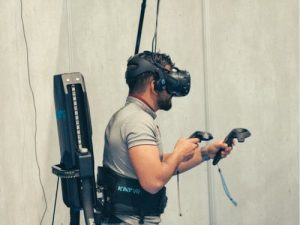
While traditional training focuses primarily on physical conditioning, VR introduces a cognitive dimension to sports preparation. VR systems create lifelike simulations of arenas, fields, and courses where athletes can interact with virtual opponents, teammates, and dynamic scenarios. By donning headsets, using motion sensors, or even wearing haptic feedback suits, athletes can experience realistic gameplay without the physical strain or risk of injury.
This immersive environment is beneficial for developing decision-making, situational awareness, and anticipation—skills that can often be the difference between winning and losing at elite levels. Unlike video analysis or mental visualization exercises, VR allows players to engage actively with a 3D, interactive environment, reacting in real-time to challenges that mimic the intensity and unpredictability of live games.
How VR Enhances Athletic Performance
Virtual Reality training offers a multitude of benefits that extend beyond the physical:
1. Mental Conditioning and Cognitive Skills
VR enables athletes to repeatedly simulate high-pressure situations, thereby improving their ability to make split-second decisions under stress. For example, a quarterback can practice reading complex defensive alignments dozens of times in VR, training the brain to recognize patterns faster and react more efficiently during real games.
2. Risk-Free Physical Practice
Specific maneuvers, such as tackling, diving, or evasive sprints, carry a high risk of injury. VR allows athletes to rehearse these movements virtually, reducing strain while retaining the mental and strategic benefits of the exercise.
3. Personalized Training Programs
Coaches can tailor VR scenarios to each athlete’s strengths, weaknesses, and goals. For instance, a basketball player struggling with defensive positioning can repeatedly train against virtual opponents in specific court zones. At the same time, a soccer forward can simulate different defensive setups to improve finishing under pressure.
4. Rehabilitation and Recovery
Injured athletes can maintain engagement with their sport through VR. While physical activity may be restricted, they can visualize gameplay, practice tactical decisions, and rehearse coordination, ensuring that mental skills remain sharp and reintegration into the team is smoother.
Real-World Applications and Success Stories
Virtual Reality training has moved from concept to Reality, with professional teams across multiple sports adopting VR with measurable success. By providing immersive, risk-free simulations, VR is helping athletes sharpen mental acuity, decision-making, and game awareness—all while minimizing physical strain.
NFL & American Football
Quarterbacks such as Patrick Mahomes and Tom Brady have integrated VR into their training routines to study defensive schemes, anticipate opponent movements, and simulate high-pressure game situations. VR allows them to virtually run through hundreds of plays in a single session, practicing reads and decision-making without risking injury. Teams report that this technology accelerates learning curves, with quarterbacks demonstrating improved reaction times and accuracy on the field after VR-based cognitive training.
NBA & Basketball
In basketball, VR helps players practice free throws, defensive rotations, and situational plays in fully immersive arenas. For example, players can rehearse last-second inbounds plays against virtual defenders that react realistically to their decisions. Teams such as the Golden State Warriors and Toronto Raptors have utilized VR to improve spatial awareness and decision-making speed. Studies show that players using VR training increase their situational awareness by up to 30%, translating to more brilliant plays and better anticipation during live games.
Soccer / Football
Top soccer clubs, including Manchester City and FC Barcelona, use VR to train players in positional awareness, opponent strategies, and tactical visualization. VR allows forwards to practice finishing under pressure, defenders to anticipate attacking runs, and midfielders to enhance their vision for passing and movement. Beyond physical skill, VR enables coaches to simulate upcoming opponents’ styles and formations, giving teams a strategic advantage on match day.
Motorsports & Tennis
Athletes in precision-based sports such as Formula 1 racing and professional tennis rely on VR to rehearse courses, match conditions, and opponent behavior. Drivers can simulate complex circuits with varying weather conditions, while tennis players practice serves and returns in virtual stadiums, thereby enhancing their timing and decision-making skills. By removing physical wear and tear, VR enables intense cognitive repetition that would otherwise be impossible without risking fatigue or injury.
Youth and Amateur Training
Beyond professional athletes, VR is increasingly accessible to youth academies and amateur teams, democratizing high-level training. Smaller clubs can now expose young athletes to advanced tactical and cognitive drills previously reserved for elite players. Programs incorporating VR report that young athletes develop stronger situational awareness and faster decision-making, giving them a competitive edge in real-world matches. Additionally, VR keeps training engaging and interactive, increasing motivation and consistency among developing players.
Measurable Impact
Across sports, VR training has shown quantifiable benefits:
- Improved reaction times and situational responses.
- Enhanced strategic decision-making and pattern recognition.
- Reduced injury risk through virtual repetition of high-impact scenarios.
- Faster tactical learning, particularly for complex team strategies.
These real-world applications demonstrate that VR is no longer a futuristic concept but a proven tool for enhancing performance at every level, from professional leagues to grassroots programs. By bridging mental and physical training, VR is helping athletes perform smarter, faster, and safer than ever before.
Cutting-Edge VR Technologies in Sports
The evolution of Virtual Reality in sports is moving far beyond simple simulations. Modern VR systems are incorporating sophisticated technologies that make training increasingly immersive, responsive, and personalized, bridging the gap between virtual and real-world athletic performance.
1. AI-Driven Opponents
Artificial intelligence is transforming VR by creating virtual opponents that react dynamically to an athlete’s decisions and movements. Instead of following scripted patterns, these AI opponents adapt in real-time, presenting unique challenges every session. For example, a soccer forward practicing finishing can face defenders who adjust their positioning based on previous actions, forcing the player to think critically and react strategically. This unpredictability mirrors the variability of live games, enabling athletes to hone their decision-making skills under realistic pressure.
2. Haptic Feedback Suits
Full-body haptic suits add tactile sensations to VR experiences, giving athletes the ability to “feel” impacts, resistance, or environmental cues. Football players can sense virtual tackles, tennis players can feel simulated racket resistance, and martial artists can practice strikes with realistic feedback. Haptic technology bridges the physical-virtual divide, making VR not just a visual or cognitive tool but a multisensory training platform that reinforces muscle memory and spatial awareness.
3. Biometric Integration
Modern VR systems are increasingly integrating biometric sensors to track physiological data, including heart rate, fatigue levels, reaction time, and even gaze tracking. This data allows VR programs to adapt in real-time: a training scenario might become more challenging if the athlete’s reaction time improves, or slow down to avoid overexertion during periods of high fatigue. This level of personalization ensures that VR training is both practical and safe, optimizing performance gains while reducing the risk of injury.
4. Mixed Reality (MR)
Mixed Reality combines VR and Augmented Reality (AR), allowing athletes to interact with virtual elements while in real-world environments. Imagine a basketball player on a physical court with virtual defenders projected in real-time, or a cyclist navigating real roads overlaid with virtual obstacles. MR enables hybrid training, where physical exertion is combined with cognitive challenges, providing a more complete and realistic preparation for actual competition. This technology is particularly promising for team sports, where coordination, positioning, and situational awareness are crucial.
5. Data Analytics and Predictive Training
Beyond immersive experiences, VR technologies are increasingly linked with advanced analytics platforms. Every movement, decision, and physiological response can be logged and analyzed, providing coaches with actionable insights. Predictive models can identify potential weaknesses, optimize training schedules, and even forecast performance outcomes, enabling teams to make data-driven adjustments that maximize efficiency and yield optimal results.
Challenges and Considerations in VR Athletic Training
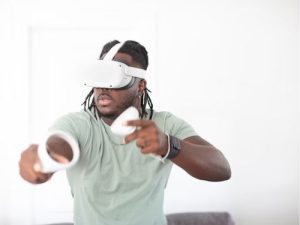
While Virtual Reality offers revolutionary possibilities for athletes, several challenges and limitations must be carefully considered to maximize its effectiveness.
1. Cost and Accessibility
High-quality VR systems, which include advanced headsets, motion sensors, haptic feedback suits, and powerful computers, can be prohibitively expensive. For professional teams with large budgets, these costs may be manageable, but smaller clubs, amateur teams, and youth programs may struggle to afford the technology. Additionally, maintaining and updating VR systems adds ongoing expenses. Accessibility is also a geographical issue—some regions may lack the necessary infrastructure or technical support to implement VR training effectively. Without solutions for affordability and access, VR could inadvertently widen the gap between elite and grassroots athletes.
2. Physical Feedback Limitations
Despite its immersive qualities, VR cannot fully replicate the physical demands of real-world gameplay. While athletes can see, react to, and make decisions in virtual scenarios, they don’t experience the actual physical exertion, balance shifts, or tactile sensations that occur during real plays. For example, a football quarterback may practice reading a defense in VR. Still, the VR simulation cannot perfectly replicate the force of an incoming tackler or the exact feel of gripping a ball during a sprint. As a result, VR should be viewed as a complementary tool, enhancing cognitive and strategic skills rather than replacing physical conditioning.
3. Motion Sickness and Adaptation
Extended use of VR can sometimes cause motion sickness, dizziness, or visual discomfort, especially during high-speed or highly interactive simulations. Each athlete responds differently—some adapt quickly, while others struggle to spend more than a few minutes in VR. Overcoming these adaptation challenges requires careful session planning, gradual exposure, and potentially custom calibration of the VR system. Failure to address these issues can reduce the effectiveness of training or even discourage athletes from consistently using the technology.
4. Integration with Traditional Training
VR cannot replace the fundamental aspects of physical practice, such as teamwork, muscle memory, endurance, and on-field coordination. While VR sharpens mental skills, tactical awareness, and situational decision-making, hands-on training remains essential for building real-world strength, speed, and cohesion. Coaches must strike a careful balance—integrating VR to augment traditional drills rather than allowing it to supplant the core physical regimen. When done appropriately, VR becomes a powerful hybrid approach, combining mental precision with physical readiness.
Expanding on these challenges makes it clearer that while VR has immense potential, its practical implementation requires thoughtful planning, investment, and a balance with conventional training.
The Future of VR in Sports
The future of VR training in sports is bright and multifaceted. We can expect:
- Global Virtual Team Training: Athletes in different countries could train together in shared virtual environments.
- Data-Driven Performance Analytics: Real-time VR metrics could feed into AI systems that provide precise recommendations for improvement.
- Enhanced Fan Engagement: VR could extend beyond training into spectator experiences, allowing fans to “step into the shoes” of their favorite athletes.
Ultimately, VR is more than a novelty—it is a tool for smarter, safer, and more precise athletic development, blending mental acuity with physical skill like never before.
How VR Elevates Athletic Performance
Virtual Reality is transforming athletic training from a purely physical endeavor into a holistic, immersive experience that strengthens both mind and body. By simulating real-world scenarios, enhancing decision-making, and providing risk-free practice, VR allows athletes to gain a competitive edge. As technology advances, VR promises to become an indispensable part of sports preparation at all levels, ushering in a new era where mental sharpness, tactical insight, and physical performance converge seamlessly.



